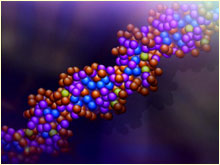Category: R&D
Infrastructure and Innovation
Amon-Hen
The Amon-Hen program seeks innovative, low-cost approaches for passive, ground-based interferometric imaging of GEO satellites. The program is envisioned as a 33-month effort that is intended to begin by March 2018. Phase 1 will last for a period of 15 months and will focus on the development of component technologies, physics-based system modeling capabilities, and…
Read more
Aerial Dragnet
Airspace for the flying public today is perpetually congested yet remarkably safe, thanks in no small part to a well-established air traffic control system that tracks, guides and continuously monitors thousands of flights a day. When it comes to small unmanned aerial systems (UAS) such as commercial quadcopters, however, no such comprehensive tracking system exists.…
Read more
Advanced Plant Technologies (APT)
The Advanced Plant Technologies (APT) program seeks to develop plants capable of serving as next-generation, persistent, ground-based sensor technologies to protect deployed troops and the homeland by detecting and reporting on chemical, biological, radiological, nuclear, and explosive (CBRNE) threats. Such biological sensors would be effectively energy-independent, increasing their potential for wide distribution, while reducing risks…
Read more
Advanced Full Range Engine (AFRE)
Maj. Nathan Greiner, USAF In the decades-long quest to develop reusable aircraft that can reach hypersonic speeds – Mach 5 (approximately 3,300 miles per hour/5,300 kilometers per hour) and above – engineers have grappled with two intertwined, seemingly intractable challenges: The top speed of traditional jet-turbine engines maxes out at roughly Mach 2.5, while hypersonic…
Read more
ADvanced Acclimation and Protection Tool for Environmental Readiness (ADAPTER)
Dr. Paul Sheehan Warfighters are travelers, and the bodily inconveniences suffered by travelers, such as jet lag and traveler’s diarrhea, can seriously degrade operational readiness and even determine mission success or failure. To maximize warfighter performance, the ADvanced Acclimation and Protection Tool for Environmental Readiness (ADAPTER) program will develop systems that provide warfighters greater control…
Read more
Adapting Cross-Domain Kill-Webs (ACK)
The goal of the Adapting Cross-Domain Kill-Webs (ACK) program is to provide a decision aid for mission commanders to assist them with rapidly identifying and selecting options for tasking – and retasking – assets within and across organizational boundaries. More
Adaptable Lighter Than Air (ALTA)
The goal of the Adaptable Lighter Than Air (ALTA) program is to develop and demonstrate a high altitude lighter-than-air vehicle capable of wind-borne navigation over extended ranges. The balloons can fly at altitudes of more than 75,000 feet. More
Active Social Engineering Defense (ASED)
Over the past 40 years, our world has become increasingly connected. These connections have enabled major advances in national security from pervasive real-time intelligence and communications to optimal logistics. With this connectivity has come the threat of cyber attacks on both military systems and critical infrastructure. While we focus the vast majority of our security…
Read more
Active Interpretation of Disparate Alternatives (AIDA)
The United States Government has an interest in developing and maintaining a strategic understanding of events, situations, and trends around the world, in a variety of domains. The information used in developing this understanding comes from many disparate sources, in a variety of genres, and data types, and as a mixture of structured and unstructured…
Read more
Accelerated Molecular Discovery (AMD)
Efficient discovery and production of new molecules is essential to realize capabilities across the DoD, from simulants and medicines essential to counter emerging threats, to coatings, dyes and specialty fuels needed for advanced performance. More









